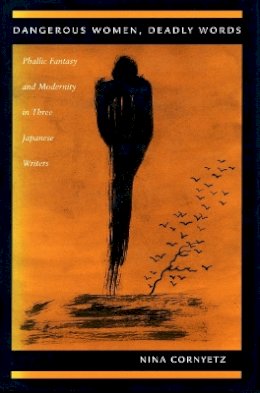
Dangerous Women, Deadly Words: Phallic Fantasy and Modernity in Three Japanese Writers
Nina Cornyetz
Dangerous Women, Deadly Words is a materialist-feminist, psychoanalytic analysis of a modern Japanese literary trope—the dangerous woman—in the works of three twentieth-century writers: Izumi Kyoka (1873-1939), Enchi Fumiko (1905-86), and Nakagami Kenji (1946-92). Linked to archaisms and magical realms, the trope of the dangerous, spiritually empowered woman culls from and commingles archetypes from throughout the Japanese canon, including mountain witches, female shamans, and snake-women.
In radical opposition to the conventional interpretation of the trope as a repository for transhistorical notions of "female essence" and "Japaneseness," the author reads the dangerous woman as connected in complex ways with twentieth-century Japanese ... Read more
The dangerous woman enabled the literary birth of a modern, phallic, national subject as its constitutive Other, the locus of "originary" desire, thus the domain of the Lacanian Real and, accordingly, the abject. Determined by the cultural abhorrence that gives shape in language to the earliest psychic processes of separating self from not-self, the dangerous woman is also the locus for jouissance, a type of erotic pleasure that threatens the stability of the experiential subject.
The book's close literary readings are deeply anchored in the gendered cultural and literary characteristics of three periods in Japan's modernity. The author traces the trope of the dangerous woman through its establishment as a male imaginary by gothic storyteller Kyoka, its subsequent cooption for female erotic agency by Enchi, and its ultimate destabilization by Nakagami through a phallic retroping of archaisms partly dependent on an equation of the social discourses on outcaste pollution with those of homosexual and female abjection.
Show LessProduct Details
About Nina Cornyetz
Reviews for Dangerous Women, Deadly Words: Phallic Fantasy and Modernity in Three Japanese Writers
The Journal of Asian ... Read more Show Less
